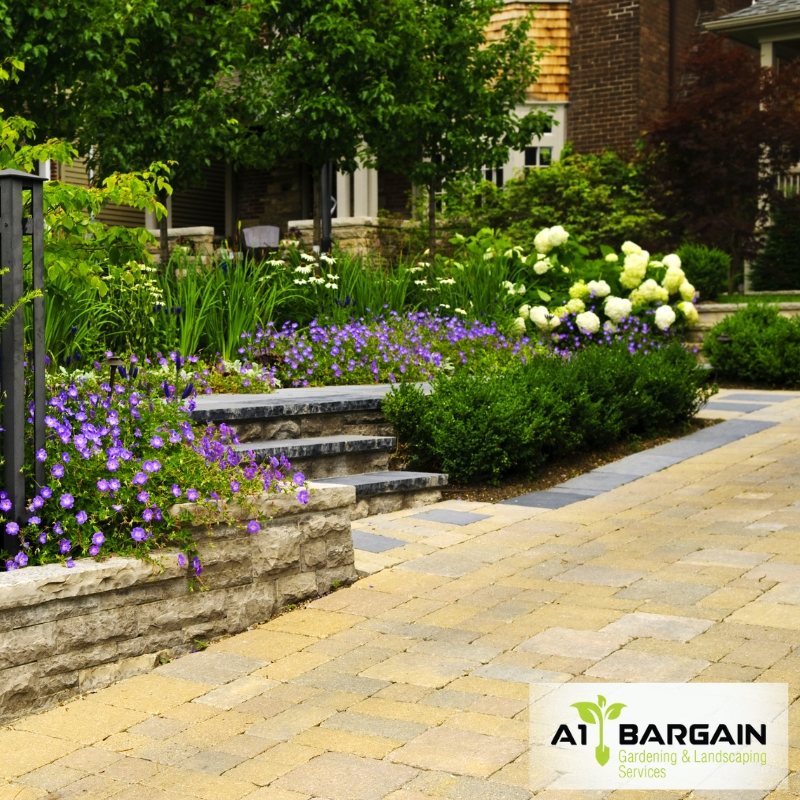Natural stone paving offers a timeless, low-maintenance solution that blends elegance with robustness. With natural stone paving, you gain a surface that resists fading, cracking, and heavy wear—ideal for outdoor environments around Sydney. You’ll value how natural stone paving elevates both property value and user experience, fitting seamlessly with garden designs and outdoor living spaces. This blog explores practical reasons to choose natural stone paving, highlighting drainage, durability, aesthetic variety, and long‑term value. By the end, you’ll understand why natural stone paving merits investment and how it outperforms synthetic and low‑grade alternatives.
What issues can arise with synthetic paving options?
- Synthetic paving often suffers from poor UV resistance, causing colours to fade unevenly over time.
- Some materials are prone to warping in heat, creating uneven surfaces.
- They may emit chemical leaching under prolonged sun exposure, affecting plant and soil health.
- Repairs typically involve replacing whole panels, leading to high maintenance costs down the track.
When these problems persist, homeowners run into expensive fixes and inconsistent patio aesthetics. To agitate, imagine needing constant repairs every few years, disrupting your outdoor enjoyment and costing more in the long run. Instead, consider a more hard‑wearing, elegant outdoor paving with travertine tiles —a long‑term upgrade over synthetic alternatives. This approach brings both premium travertine paving stones that resist fading and a surface you can enjoy with confidence.
What costs or complications come with low‑grade paving?
- Cheap paving options often use thin materials that crack under everyday use.
- Subpar edges and joints lead to weed growth and an unsightly finish.
- Increased replacements inflate long‑term costs, sometimes tripling initial savings.
- Poor installation shortcuts can result in surface drainage issues and pooling water.
Facing these drawbacks, homeowners often end up paying back in repairs and replacements. The solution lies in investing upfront in long‑lasting premium travertine paving stones — your patio becomes more resilient, reduces upkeep, and improves aesthetics.
Why might neglecting drainage cause paving damage?
- Standing water leads to surface erosion, especially on softer substrates.
- Frost or heat expansion in damp spots can cause tiles to crack or lift.
- Water pooling under paved surfaces invites mould or algae, increasing slip risk.
- Poor grading commonly results in drainage failure during heavy rain or hose use.
When drainage is ignored, even durable materials fail prematurely. To agitate, imagine slippery stones and repeating tile replacements after winter. A better route: learn about drainage solutions for patios . That informs how a well‑installed natural stone paving system channels water away and stays durable through seasons.
How does natural stone paving solve drainage and durability concerns?
- Natural stone is a veteran at resisting wear, built to handle weight and weather.
- With proper substrate and slope setup, it delivers excellent surface runoff.
- Natural porosity aids gradual water absorption, preventing rapid pooling.
- Joints between stones ease pressure shifts, cutting crack risks.
| Feature | Natural Stone Benefits | Synthetic Paving Weakness |
| Drainage | Excellent water runoff | Often traps water |
| Durability | Lasts decades | Cracks/wear in years |
| Heat tolerance | Natural thermal stability | Warps under the sun |
| Aesthetics | Unique stone patterns | Fades or peels |
The solution: expert natural stone paving installation service combines correct drainage prep and durable materials. That protects your investment and adds a quality natural travertine outdoor surface option to your property.
What design options are available with natural stone paving?
- A wide selection of textures—polished, brushed, sand‑blasted—that suit different styles.
- Colour ranges from ivory to charcoal to match garden themes.
- Shapes like large-format tiles, pavers, or irregular cobbles allow creative layouts.
- Finishes such as honed or tumbled offer both beauty and slip resistance.
Natural stone adapts to formal courtyards or relaxed alfresco areas. If you’re keen to explore elegant patio paving layouts , you’ll see how stylish travertine stone paving pathway designs can transform flow and visual impact in outdoor spaces.
How can homeowners overcome common travertine paving problems?
- Uneven settling? Ensure proper base compaction and joints with flexible sand.
- Slip concerns after rain? Choose a tumbled finish for a better grip.
- Stains from spills or mulch? Seal properly and clean promptly with mild detergent.
- Discolouration or lichen? Use stone‑safe cleaner and re‑seal every few years.
Those facing issues can reduce risks by following a good maintenance routine. You can discover natural stone maintenance tips that keep surfaces safe and looking sharp. That leads to long-lasting enjoyment and protection from usual travertine faults.
Final thoughts on choosing natural stone paving
Opting for natural stone paving gives you a durable natural stone driveway solution that meets both function and form. It solves drainage troubles, resists wear, and offers endless design flexibility. If you’d like a Talk to A1 Gardening & Landscaping Sydney for stone paving advice, the team at A1 Gardening & Landscaping Sydney can share installation insights and help tailor your stone patio project to local conditions.

